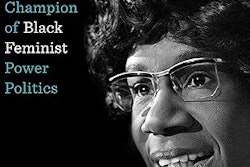The U.S. Supreme Court decision rejecting race conscious admissions at colleges and universities includes an exemption for military service academies.
Although a challenge to the exemption is expected, the justices who struck down affirmative action in admissions noted that military academies have “potentially distinct interests” when it comes to promoting racial diversity. Thirty-five former military leaders filed a friend-of-the-court brief that referenced the national security interests at stake in sustaining the longstanding admissions policy.
“Our military’s diversity is a strength, not a weakness,” tweeted President Joe Biden on July 27. “It’s a necessary part of warfighting and all successful military operations. And our unity out of many — not division — ensures good order and discipline, unit cohesion and effectiveness, and military readiness.”
In 1968, African Americans made up 10.5% of the U.S. population and 12.6% of the U.S. Army, but only one of 520 generals was Black, notes Dr. Beth Bailey, a Foundation Distinguished Professor at the University of Kansas and author of An Army Afire: How the U.S. Army Confronted Its Racial Crisis in the Vietnam Era. Of the Army’s 6,399 colonels, 42 were Black, which was less than 1%. In 1967, the Department of Defense (DoD) made it clear that it expected the service academies to increase the number and percentage of Black cadets.
“The military services must raise their own senior leaders, and that takes decades,” said Bailey. “So, decisions made about who is admitted to the military academies, what institutions have ROTC programs and who comes to the officer corps through that path have major long-term consequences — as do decisions about assignments, the availability of mentoring and the evaluation process.”
Service academies
Bailey said affirmative action in admission was a key tool in attacking the ongoing and long-lasting legacy of racial discrimination and segregation, “which had produced an officer corps that did not correspond to the diversity of the enlisted ranks, the composition of the American public or represent the full range of talents and abilities that might strengthen the Army in fulfilling its mission of national defense.”
 Dr. Beth Bailey
Dr. Beth Bailey
“As part of the Naval Academy’s admissions process, all candidates are evaluated using a holistic approach that includes many different factors and considerations associated with each applicant’s individual record,” said CDR Ashley Hockycko of the USNA. “Historically, race has been one of many non-determinative factors — such as geographic and socio-educational backgrounds, work experience, STEM interest/propensity, etc. — considered when holistically evaluating candidates for appointment consideration.”
Dr. Charn McAllister is a 2005 graduate of the USMA and an associate professor of management at Northern Arizona University (NAU) and director of the NAU Institute for Public and Professional Ethics in Leadership. McAllister said it is incredibly important to preserve affirmative action in admissions at the military academies.
“The argument that a diverse officer corps is paramount for the success of the military is unquestionable,” said McAllister, who served as an officer in the U.S. Army until 2012. “Having an officer corps that looks completely different than all the soldiers is awful.”
McAllister said having affirmative action in the admissions process does not reduce the caliber of the officer corps. Academy graduates are commissioned officers after graduation, but they do not receive promotions in rank without showing skill and leadership ability.
“As you have a career in the military, you have to make it through each step,” McAllister said. “People who make it to lieutenant colonel, colonel, [or] general have shown a pattern of success. In the case of colonels, it takes 15 to 20 years.”
Effectiveness of diversity
“It’s advantageous to have a military that reflects the country,” said Dr. Gary Rose, a long-time professor of political science at Sacred Heart University in Connecticut and now a scholar in residence. “That way there’s buy-in from all different components of society in defending our country. It’s supposed to be a collective effort.”
Rose said when he served in the Army decades ago, he could see the effort to diversify the officer corps. When the enlisted ranks are multi-racial and include both men and women, there needs to be officers who reflect that because diversity contributes to more trust and better leadership, said Rose, adding that an officer corps of mostly white men would lead to a less effective military.
“Can you imagine if people are going into combat and all the officers look one way and everyone else looks different,” said McAllister. “It creates some kind of divide that I don’t think is productive for the military.”
Bailey said that, although the current officer corps does not mirror the enlisted ranks, it does reflect it. Sustaining that kind of diversity requires attention to the composition of the cadets at service academies in race and ethnicity as well as gender. More important, it requires a level of intentionality.
 Dr. Charn McAllister
Dr. Charn McAllister
The current U.S. Secretary of Defense, Lloyd J. Austin III, graduated from the USMA in 1975. During his 41 years of military service, Austin rose to the rank of four-star general and set historic precedents as the first African American to serve as vice chief of staff of the Army and commander of U.S. Central Command (CENTCOM). McAllister notes that Austin’s sustained success is due to his unrelenting excellence and proven ability to lead.
The current Chief of Staff of the Air Force (the first African American to lead a branch of the U.S. military) and nominee for Chairman of the Joint Chiefs of Staff, Gen. Charles Q. Brown Jr., participated in an Air Force ROTC program at Texas Tech University. In addition to distinguished service and leadership, both Austin and Brown, a four-star general, earned advanced degrees as their military careers progressed.
Potential negative impact
The USAFA is watching how the attacks on affirmative action may impact their ongoing efforts to diversify the military.
“We’re aware of and acknowledge the Supreme Court decision concerning affirmative action in college admissions,” said a USAFA spokesperson. “We’re currently assessing the decision and its potential impacts on our practices.”
If a challenge to affirmative action in admissions at service academies prevails and it is removed at the service academies, it will take more than 20 years to fix that mistake, according to McAllister. “Because you can’t bring in a diverse body of colonels,” he explains. “They have to start at lieutenant every single time.”
It is unclear how the loss of affirmative action in admissions at colleges and universities will impact ROTC programs. McAllister said it may decrease the diversity of the officer corps.
Rose is the liaison for Sacred Heart’s Air Force ROTC program. There has been a growing number of Hispanic students participating and a definite female presence, many of whom are nursing majors. The students attend their military science courses at nearby Yale University. He has seen students become commissioned officers, noting that when you create welcoming environments, more people of color participate in ROTC and OCS.
“There should be points of access and more opportunities for people,” said Rose. “It is beneficial to the country.”
The battle to dismantle affirmative action in all sectors of society will likely reach the military. The question is, when?
“The Department is evaluating the implications of the Court’s decision,” notes a Defense official in a statement provided by the USNA. “We rely on a pipeline of highly qualified American patriots from all walks of life and backgrounds, which is crucial for our national security. Secretary Austin and the DoD remain deeply committed to developing a strong, highly qualified officer corps that is ready to lead a 21st Century military that draws on the full strength of the American people. Our service academies will keep working to educate the next generation of military leaders so that they can lead our increasingly diverse Joint Force.”


















